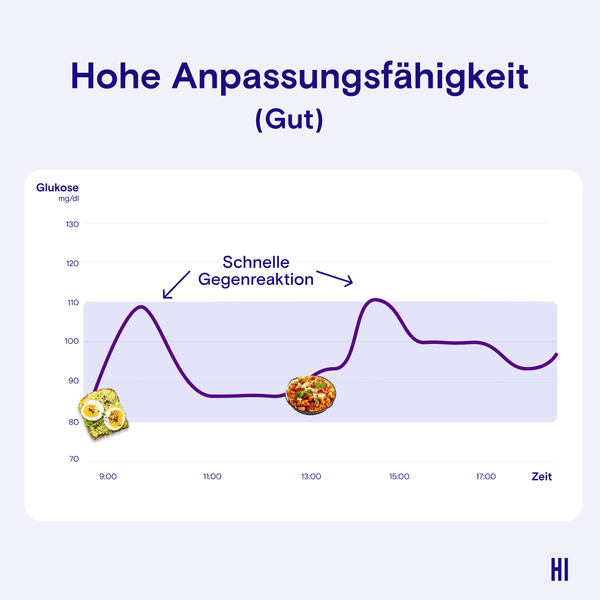And why should you care?
It is normal for our blood sugar levels to fluctuate throughout the day.
These fluctuations can also vary from day to day. Food, exercise, mood, stress, and sleep can all cause blood sugar levels to rise and fall.
variability
We call this up and down in blood sugar levels throughout the day variability.
They are a normal part of our body's responses to life. High variability occurs when blood sugar levels rise and fall sharply, very high and very low. - The classic blood sugar roller coaster
Maybe you ate a large portion of pasta for lunch. Your blood sugar spikes, and for about half an hour, you feel great, full of energy, and in a good mood. But soon, that energy is gone. You can no longer concentrate, and you desperately need something to eat—now.
If you experience this multiple times a day, your blood sugar fluctuates significantly, which means it's highly variable. You're on a blood sugar roller coaster. This constant roller coaster of highs and lows can leave you feeling exhausted, moody, and hungry.


adaptability
In addition to variability (how much blood sugar levels rise and fall), it is also about adaptability (how long blood sugar levels remain elevated before returning to the baseline value).
If your body quickly counteracts a rise in blood sugar levels and manages to keep them stable, you have a high level of adaptability. A blood sugar level that doesn't drop within 2.5 hours after eating is a sign of poor adaptability.


The good news:
The good news:
You can stabilize your blood sugar levels with a few simple lifestyle changes, making it easier to stay in the optimal range of 80-110 mg/dl (140 mg/dl after eating).
Tips to improve your variability and adaptability:
Pay attention to your diet
You can't escape a poor diet. Even with regular exercise, unhealthy foods put a strain on your body at the cellular level. Focus on whole foods rich in fiber and avoid highly processed foods and added sugar.
Ideally, you should eat the fiber first whenever possible.
Exercise regularly
Exercise has many positive effects, such as better blood sugar control and improved insulin sensitivity. Improved insulin sensitivity leads to better variability and adaptability. It also helps your body maintain healthy blood sugar levels.
Do a variety of sports to help your body become more metabolically flexible.
Reduce stress and get enough sleep
Too much stress and too little sleep can lead to chronic health problems such as diabetes or increase the risk of cardiovascular disease.
Poor sleep can affect hormone levels and increase inflammation in your body. Stress causes the body to release hormones like adrenaline and cortisol. In a "fight-or-flight" stress response, our body releases glucose to provide the extra energy needed to cope with the situation.
Stress reduction and improved sleep can support healthy glucose regulation and have a positive impact on variability and adaptability.




